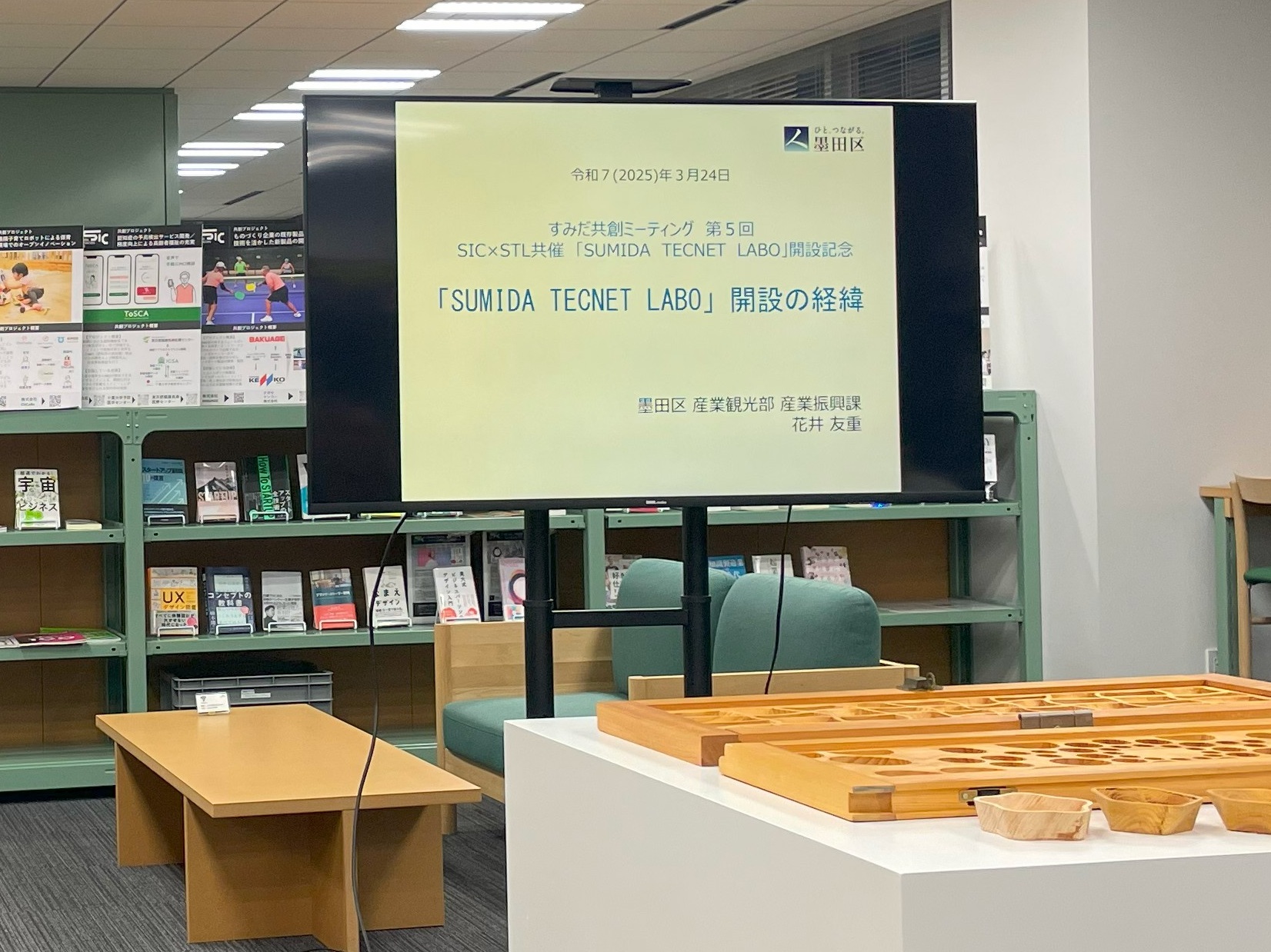「すみだ共創ミーティング 第5回」に参加してきました。
最初に墨田区の産業の集積を目的とした、ものづくりスタートアップの試作品の相談や製造支援をしてもらえる施設すみだテクネットラボ (STL)の開設にあたり、「STLの開設経緯」を伺い、STL副理事長の間中氏よりSTLで用いられている工作機械の特徴や必要なデータ等を伺いました。
次に平沢岳人先生より、平沢研究室の活動やSTLに導入された工作機械でどのような加工が行えるかを伺いました。
最後に栗原氏をモデレーターとしてゲストや出席者を交えてざっくばらんな質疑応答を行いました。
学生時代に講義を受けた平沢先生に、いわゆる3Dプリンターとは異なる6軸の工作機械でのみ可能な抉るような加工の話を伺えた、貴重な機会でした。ハンディ型3DスキャナーとSTLに導入された類の工作機械があれば、光付けのような作業も代替できるのかな、と思いました。
I attended the “Sumida co-creation meeting #05″.
First, we learned about the establishment of Sumida Tecnet Labo (STL), a facility dedicated to supporting manufacturing startups with prototyping consultations and production assistance, as part of Sumida Ward’s initiative to foster industrial concentration. We received an overview of STL‘s founding background and heard from Vice Director Mr. Manaka about the characteristics of the machining equipment used at STL and the necessary data requirements.
Next, Professor Gakuhito Hirasawa introduced the activities of Hirasawa Laboratory and explained the types of machining processes that can be performed using the equipment installed at STL.
Finally, with Mr. Kurihara as the moderator, we had an open and informal Q&A session with the guest speakers and attendees.
For me, it was a valuable opportunity to hear from Professor Hirasawa, who had taught my classes during my student years, about specialized cutting processes that are only possible with six-axis machining equipment, which differs from conventional 3D printers. I also wondered if tasks such as Hikari-tuke; a traditional Japanese woodworking technique for precisely fitting the surface of component A to the uneven surface of component B, could be replaced using handheld 3D scanners in combination with the types of machining equipment available at STL.

